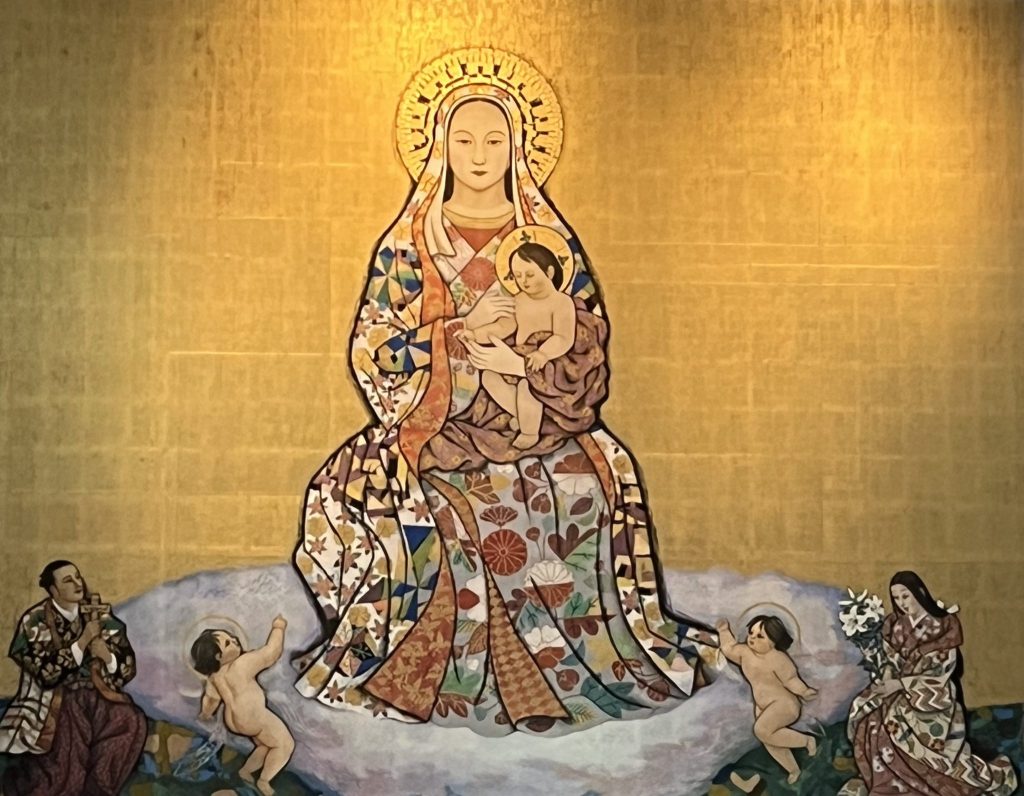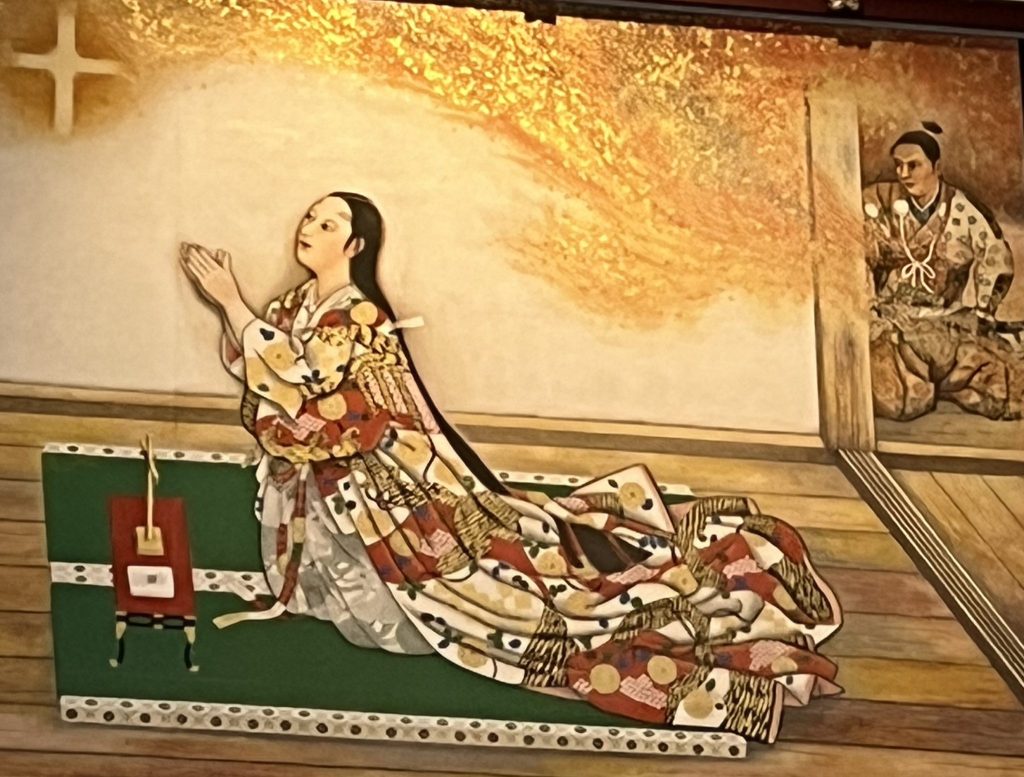It is 75 years since the first Good Samaritan Sisters set sail for Japan in the aftermath of the bombing of Hiroshima and Nagasaki. As I pray in St Mary’s Cathedral in Osaka, a kaleidoscope of images and memories floods my senses and spirit, writes Congregational Leader Sister Catherine McCahill.
During the Second World War, my 10-year-old father watched from the front steps of his family home as the planes flew out and returned from the Battle of the Coral Sea. Under the secrecies of war-time Australia, neither he nor his family knew the destination of those planes or their mission. Only later would the significance of the large number of sorties become evident.
I grew up with my father’s war-time stories, real and probably exaggerated. He had roamed the western outskirts of Townsville, the base of several army camps in the 1940s. I watched war movies with him and heard his perspective.
In 1945, the war came to an end when the US dropped atomic bombs on the Japanese cities of Hiroshima and Nagasaki.
The Good Samaritan Sisters have had a presence in Japan since 1948, when six Australian Sisters accepted an invitation from the Bishop of Nagasaki to respond to the needs of the people in the wake of the nuclear devastation.

The Virgin Mary by artist Insho Domoto. Image: Sr Catherine McCahill / Sisters of the Good Samaritan.
This month marks 75 years since the first Sisters set sail for Japan. Today, I prayed in the Catholic Cathedral of St Mary in Osaka. Insho Domoto’s painting of the Virgin Mary on the back wall of the sanctuary is stunningly beautiful. Mary dressed in an ornate Japanese gown holds the child up for adoration before Ukon Takayama and Garasha Hosokawa (martyrs of the persecuted 17th Century Christian community) kneeling on her right and left. Words are inadequate to describe the splendour and poignancy of this art.
In this space, a kaleidoscope of images and memories flood my senses and spirit.
At school in the 1960s and 70s, we learnt about the Good Samaritan Sisters’ mission to Japan. It seemed remote, exotic and in need of our prayers and money.

Ukon Takayama by artist Insho Domoto. Image: Sr Catherine McCahill / Sisters of the Good Samaritan.
By the 1970s, I was a novice with the Sisters and shared the novitiate journey with two novices from Japan. My understanding of Japanese people grew markedly. They were no longer remote or distant but part of this community, each of us endeavouring to learn the Good Samaritan way of life. I realised for the first time that those war-time stories were all told from the Australian perspective. There was another perspective, which I was yet to learn.
In 1994, during my preparation to spend a semester with the Japanese community of Sisters in Sasebo and work at Seiwa Joshi Gakuin (middle and high school), I admitted to myself, and a few confidants, for the first time that I had prejudices.
Six months later, having acquired my alien registration and a smattering of Japanese words, I returned to Australia with an awareness of how little I understood this other culture. However, I had been enriched. I had more knowledge of some of our Japanese Sisters and of the Japanese school system. I had a deeper appreciation of the beauty of this country and the courtesy of its people. I had taken time to read Japanese literature (translated), to do a cursory study of its religions, and to visit many of its sacred shrines. Some of this found a home in me and changed me and my perspective.

Garasha Hosokawa by artist Insho Domoto. Image: Sr Catherine McCahill / Sisters of the Good Samaritan.
In the years since, I have visited Japan many times. I have worked with and met with our Japanese Sisters, both in Australia and in Japan. I have listened to countless stories and read significantly of the encounters between Good Samaritan Sisters (Japanese and Australian) and the communities in which they lived and ministered.
Most of all, I cherish Sr Rose Pekin’s poem (penned in 1978) for the 30th anniversary of the Good Samaritan Sisters’ arrival in Japan because it puts words on my unvoiced cogitations:
We come to bring Christ
to ancient hills,
to shrines and temples,
among treasures left by artist and by poet
in scroll and in song.
Our round eyes are blind
to Christ in this land,
in this literature,
in this people.
We work, and await, expectantly, the beginnings of ‘the Mission’.
Slow learners, we find, at last, the heart of Mission –
Christ is here already.
Christ has been here always.
Christ, in Japan, still waits to be found in Japan.
It is 75 years since the first Australian Sisters left for Japan. In the intervening years they have been joined by Japanese women and they have founded a community in the Philippines.
The perspective of all of us has been changed by this steady ebb and flow over the passage of time. This is interculturality.
At our recent Chapter Gathering, we committed ourselves to “interculturality which transforms.” Yes, we are in the process of transformation. We are a different congregation because six Sisters went to Japan and our lives became interwoven. We are different again, because in 1990 two Sisters began a community in Bacolod in the Philippines and the following year Sisters formed a community in Kiribati.
Mistakes and challenges abound, but we are being transformed. We have learnt, and continue to learn, that when we encounter differences or find the gap between us confronting, not to ignore it, or move away, but to engage in dialogue that is respectful and neighbourly.
Thus far, I have only addressed culture from the perspective of nationality and ethnicity, but it is far deeper. We know that cultural identity also includes religion, education, socio-economic status, age, sexual orientation, gender and generation.
As Good Samaritans, we cannot be good neighbours unless we commit to interculturality. Day by day, we strive to engage with neighbours and strangers wherever we are. Cultural differences can be challenging but when we acknowledge them, and engage in respectful dialogue, the space between us becomes sacred and we are all enriched.
